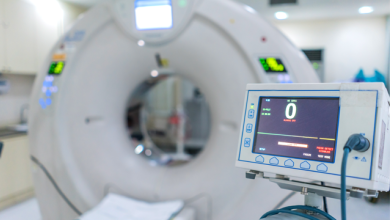Search results
Author(s):
Michael F Morris
,
Philip A Araoz
Added:
3 years ago
Mitral valve dysfunction is the most common cause of valvular disease in the US.1 Although echocardiography is the primary non-invasive modality for visualizing the mitral valve, advances in technology continue to allow for improved evaluation of mitral disease with magnetic resonance imaging (MRI) and computed tomography (CT).2,3 Currently, the role for MRI and CT assessment of the mitral valve…
View more
Clinical Utility of Realtime Three-dimensional Echocardiography - A New and Emerging Standard
Author(s):
Tamar S Polonsky
,
Victor Mor-Avi
,
Roberto M Lang
Added:
3 years ago
Article
Author(s):
Tamar S Polonsky
,
Victor Mor-Avi
,
Roberto M Lang
Added:
3 years ago
Cardiac imaging has become fully integrated in the management of patients, with echocardiography being the most widely used modality. Two-dimensional echocardiography (2DE) offers a detailed assessment of ventricular function, valvular pathology, and hemodynamics, but its comprehensiveness is limited by the fact that images represent a single plane, and may thus inadequately represent a heart…
View more
Author(s):
Dante J Graves
,
Rick W Meece
Added:
3 years ago
Despite significant improvements for earlier detection of and medical therapies for heart failure, a recent American Heart Association (AHA) study stated that the actual incidence of heart failure has not declined. Of interest is the fact that the AHA found hypertension precedes development of heart failure in 91% of cases. The increasing prevalence of these combined disease states escalates the…
View more
Author(s):
Jose Luis Zamorano
Added:
3 years ago
2D echocardiography (2DE) is a common diagnostic and treatment planning tool in clinical cardiology, especially for the assessment of left ventricular (LV) volume and function. However, traditional 2DE is severely limited by its dependence on geometrical assumptions, which can lead to inaccuracies in volume quantification.1 Because 3D echocardiographic (3DE) imaging eliminates geometrical…
View more
Author(s):
Kevin Lee
,
Iva Minga
,
Eryn Cameron
,
et al
Added:
9 months ago
Khung Keong Yeo
Research Area(s) / Expertise:
Job title: Clinical Associate Professor and Senior Consultant
Author
Author(s):
Linda D Gillam
Added:
3 years ago
A patient presents to their physician with progressive dyspnea on exertion, orthopnea, and fatigue. Physical examination reveals bibasal rales, distended neck veins, an S3 gallop, and an apical holo-systolic murmur. The clinical diagnosis is straightforward - this patient has congestive heart failure.Almost certainly one of the first tests performed in this patientÔÇÖs diagnostic evaluation will…
View more
Author(s):
Miho Fukui
,
João L Cavalcante
Added:
3 years ago
Degenerative calcific aortic stenosis (AS) is one of the most common valvular heart diseases, affecting >3% of those aged >65 years in the West.1 As a result of an aging population, the prevalence of AS is expected to increase. Severe AS causes chronic pressure overload of the left ventricle (LV), resulting in LV hypertrophy (LVH), diastolic dysfunction, an increase in the size of the left…
View more
Author(s):
David J Wilber
Added:
3 years ago
Atrial fibrillation (AF) is a supraventricular arrhythmia characterized by poorly coordinated atrial activation and associated with reduced atrial mechanical function. Over the long term, it is associated with an increased risk of stroke, heart failure and mortality. AF can occur in the absence of overt structural heart disease in up to 30% of patients; however, hypertension, coronary artery…
View more












